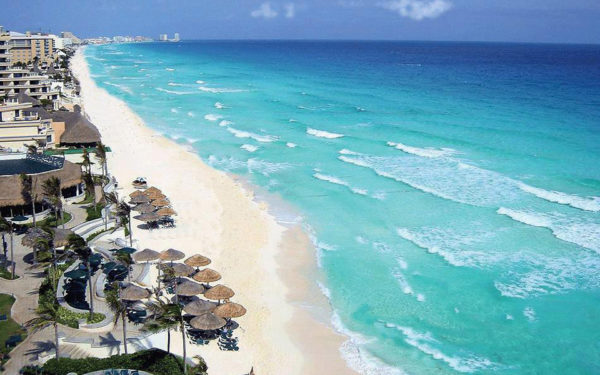The government of Quintana Roo and Rogelio Jiménez Pons, who will occupy the General Directorate of the National Fund for Tourism Promotion (Fonatur) during the presidency of Andrés Manuel López Obrador, is already working to unify the Cancún-Tulum train project and the Mayan train, which will include four states of the Mexican southeast.
It should be noted that the Cancun-Tulum train is a project developed over a year and a half, covers 126 kilometers and its route goes from Cancun, with a stop in Playa del Carmen, to Tulum. The budgeted preliminary investment reaches 40 billion pesos and it is planned to do it through the Public Private Partnership (PPP) scheme.
For its part, the Mayan train, proposed in campaign by the López Obrador team, will leave from Cancun, travel all over Quintana Roo to the south, head west for Calakmul in Campeche, Tenosique in Southern Tabasco, until arriving in Palenque, Chiapas.
In the first semester of 2018 the international airport of Cancun reported a growth of 7% in the total volume of passengers, of which, domestic traffic increased 12.5% and international 4.7% over the same period of 2017. In comparison, at the national level this growth is less than 3%.
The airport in Cancun is the second with the most passengers in Mexico; it just inaugurated its terminal 4 and the growth rate of more than two million additional passengers each year has forced Grupo Aeroportuario del Sureste to include in its budget the construction of terminal 5, for this year or early next year.
Approximately 303.5 million dollars will be destined to the new terminal, as well as to improve the international airport of Cozumel.
In this airport, 70 thousand visitors per day are served from more than 170 airports in the world, in addition to national ones, transported by about 100 airlines of different flags. Each visitor that arrives represents an economic spill of over one thousand dollars, with productive chains that have generated a 7 percent growth of the Gross Domestic Product (GDP) during the last year in Quintana Roo, while nationally the GDP growth has been only 2 percent.
It should be noted that more than 500,000 workers depend directly on the tourism sector, so the above figures translate into greater welfare for almost all Quintana Roo people who depend indirectly on tourism.
This year the provision of logistics infrastructure for the supply and exchange of goods has been projected. In the first stage of the Southeast Logistics Center “Pangea” in Puerto Morelos, up to 160 local and national companies will be able to install businesses mainly for the tourism industry, including a major facility to serve large ships.
This southeast logistics center was announced by the state government and the business sector as a project that will allow economic diversification taking advantage of strategic geographic location and national and international airport connectivity.
The facilities will be located 20 kilometers away from the International Airport of Cancun, and five kilometers from the pier of Puerto Morelos. This is a private investment of Group E that will cost 500 million US dollars, where 250 million will be invested in the construction of the property on a total area of 230 hectares. The construction of a high-altitude port is foreseen for the maritime supply of products with vessels that have little draft and easy maneuverability.

The development will group local, national and international free trade agreements to supply products to the hotel chains of Quintana Roo, such as sheets, furniture, equipment for construction, food and beverages, meat products, among others.
The economic growth develops to the north and center of the state, from Holbox Island to Tulum, although from the seaport of Mahahual a tourist increase has been detonated in the south of the state favoring an emerging economy in Bacalar, Mahahual and Chetumal.
In order to promote this growth in the south and to close the gap with the powers of the north of the state, the planning works for the dredging of the Zaragoza Canal are still underway, which will be a new and important means of communication and maritime trade with the Caribbean, Central and South America.
The federal government handed over to Quintana Roo a few months ago the land titles of 338 hectares of land adjacent to the Zaragoza canal in the Chetumal Bay, which opened the possibility of establishing a port, both for international trade and for tourism. The Zaragoza channel is an artificial seaway of approximately 1.23 kilometers that allows the communication of the Caribbean Sea with the bay of Chetumal, in the deep south of the state of Quintana Roo.
Source: lajornadamaya.mx


